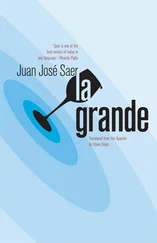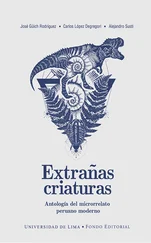Of course it’s extremely lucky that, of the seven intelligent species known to date, only we, the Cetians, and the Laggorus breathe oxygen. A planet with the methane atmosphere that Amphorians love wouldn’t do any good for us. Or for the Kerkants or Parimazos either, with their fluorine-based metabolisms. And forget about the Juhungans, who breathe hydrogen and in whose bizarre body chemistry the rare element geranium plays the same function as carbon in ours.
Naturally, there are squabbles over local interests from time to time…
And that’s where the Galactic Community and its Coordinating Committee come in. They were created, just four years after we humans first set out to investigate the galaxy, as oversight bodies for mediating border disputes and other problems that might arise among the intelligent races.
It’s been four and a half decades since we and the other rational species began exploring and mapping the Milky Way and its planets. At the current rate, it’s estimated that it’ll take us at least two more centuries to finish the job. Maybe even three or four if we include the Magellanic Clouds.
That is, if no new species with faster-than-light travel turn up. If we aren’t invaded by beings from beyond the galaxy. If the black hole at the center of the Milky Way doesn’t devour us all. If no other such imponderable catastrophe takes place before the damn map is done.
Ah, and as for Artificial Intelligence… Just fine, thanks for asking. Neither we nor any of our intellectual peers have achieved it. But nobody’s proved it’s impossible to create, either, so the possibility is still out there. Latent.
The truth is, we can’t boast of having attained the same level of development in other fields of science and technology as in our superluminal means of travel.
Oh, sure, we can fly from an orbit around Rorcualia, the fourth planet in the Tau-Prime Hydrae system, to one around Amphor-Akhr-Jaur, the Cetian colony on the eighth planet in the Vega system, in a matter of seconds, on practically zero energy.
And that’s all well and good.
But our sophisticated (?) interstellar ships have no artificial-gravity generators, and to land on a planet from their orbiting positions they have to use ion-propulsion engines—an antiquated Juhungan design, but still a lot more efficient than our old chemical-combustion rockets.
Except, of course, on worlds with colonies already rich enough to build orbital elevators—one of the three or four human ideas that the other races in the Galactic Community have quickly adopted with the sincerest enthusiasm.
No human or any other member of the “lucky seven” races has managed to finalize a safe and effective means of atomic fusion. None has created a medical science sufficiently advanced to defeat death and disease, or even to postpone decrepitude for any appreciable time. Other than new transgenic species and a few cloning successes here and there, such as reviving the dinosaurs (and it was the Parimazos, no less, who did that—how embarrassing!), biology hasn’t advanced in many important ways we can feel proud of lately.
Kerkants, Parimazos, Amphorians, and Juhungans—that is, the methane-, fluorine-, and hydrogen-breathing species—are all telepathic. But they have no idea why their handy means of communication only works with members of their own races and only up to a certain distance. Worse, nobody knows how to pass their useful ability on to the rest of us poor oxygen breathers. Supposing they’d really be interested in letting us acquire the ability.
The oft-theorized system of superluminal communication, the ansible, also remains a dream. Ships can travel faster than light thanks to the González drive generated on board, but not electromagnetic waves. No news can travel faster than the mail ship carrying it.
The promised “materials of the future,” more resilient than carbon nanotubes, harder and more durable than diamond, and cheaper than water, still haven’t turned up…
I could go on listing technological embarrassments, but I think the idea is clear enough: We seven races are like savages on a forgotten island in the middle of Earth’s Pacific Ocean who discovered the secrets of lighter-than-air travel a thousand years before the Montgolfiers, Santos-Dumont, and Zeppelin. We travel from atoll to atoll, from isle to continent, in our enormous dirigibles, and colonize them… but we have no metallurgy, no firearms, no compasses, no radios.
The great fear of the “lucky seven” is that someday we’ll meet beings from some planet on the outskirts of the Milky Way, or perhaps from another galaxy, who’ll have the sort of advanced technology you’d expect to emerge from the orderly progress of science. Not just the Tunnel Macroeffect (the technologically advanced race might not even know about it), which scientists now think we discovered more or less the same way the donkey in the fable learned to play the flute—by accident.
Paranoid conspiracy theorists, for their part, find it very suspicious that seven distant and very distinct species all discovered, almost simultaneously, the same method of faster-than-light travel, which seems to correspond to a much higher level of scientific development than we’ve attained in any other field. They wonder whether we might not be the subjects of some galactic-scale experiment being carried out by a supercivilization too lazy to explore the universe on their own, who have delegated that arduous task to us without even bothering to tell us about the high honor they bestowed upon us…
A supercivilization that, to top it all off and complete the vicious circle, might be a civilization of intelligent machines—the infamous AIs.
And, after this brief digression, I guess it’s time to get back to my autobiography…
González syndrome is the term for the excessive growth experienced by some humans after spending long periods in weightlessness as children and teenagers. It is considered a benign form of acromegaly in which, fortunately, the short bones do not grow as much as the long bones.
Astronauts were already familiar with the effect in the twentieth century. In weightless conditions, your intervertebral discs relax, your spinal column grows a few centimeters—and then shrinks again, though not quite all the way, when you return to the planetary gravity well. And so, after each long voyage, an astronaut ends up being a little taller than before.
But before the Tunnel Macroeffect, and even for a few years after it had been fine-tuned and entered into general use, only a select few remained in weightlessness for weeks or months at a time. And they were all adults.
People only started to notice the effects of alternating periods of gravity and weightlessness on a growing human body when I and a few other little kids began to grow with the unbridled enthusiasm of transgenic corn overdosing on chemical fertilizers.
The endocrinologists thanked my mother and father for bringing me to their clinics right away. They treated me with bone fortifiers and calcium superabsorbers to eliminate the risk of osteoporosis, to which acromegalic giants are prone. They implanted artificial cartilage in the menisci of my knees, the most vulnerable joint for tall, heavy humans. They wrote a couple of brainy dissertations about my case… And they banned humans under the age of ten from spending more than two weeks a year in weightlessness.
A wise regulation, for all the good it did me. By the age of nineteen, when the cartilage in my wrists closed, showing that I had finally stopped growing, I was seven feet eleven inches tall and wore size fifty shoes. My voice was a subterranean, sometimes infrasonic bass. Unchecked bone growth gave me the face of an ogre. Teenage acne added to the effect.
Читать дальше












